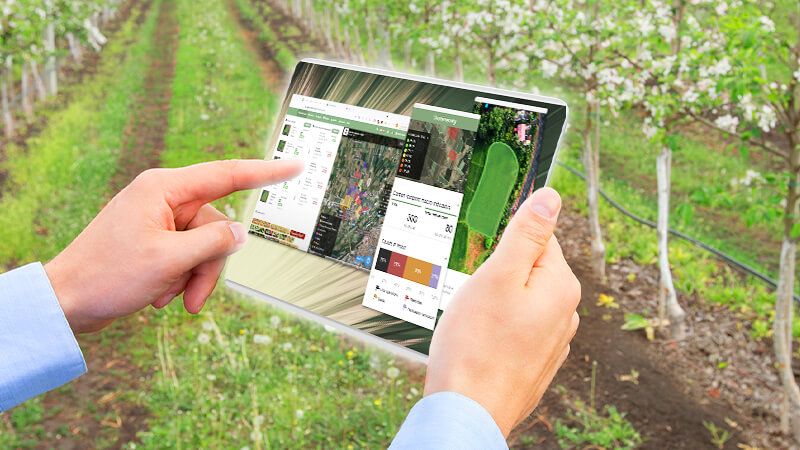Across the Northern Hemisphere, we are in for a challenging winter. From supply chain issues to rising fuel costs, to the cost of living - 2022 has certainly done a number on us! But don’t fret, BKT has your back to make this winter a little less chilly.
Across the Northern Hemisphere, we are in for a challenging winter. From supply chain issues to rising fuel costs, to the cost of living - 2022 has certainly done a number on us! But don’t fret, BKT has your back to make this winter a little less chilly.
Today’s article will go through 10 tips on getting your farm winter-ready, and what to do when the colder months hit.
1. Tractor Maintenance
Among the more expensive equipment on your farm, it is a good idea to practice good tractor maintenance to ensure it survives the winter, and further prolong its life span. You should carry out routine checks to ensure tire pressure is optimised, and that fuel and fluids are working optimally, especially before storing, as this can avoid headaches before they happen.
Check anything that is made out of rubber, as the cold can make rubber very brittle and is easier to damage - look out for cracks and other signs of wear and tear. When storing, ensure your trusty vehicle is in a dry place and is cleaned properly, to help fight against rust. Also, make sure you schedule your tractor to get serviced!
2. Machinery Maintenance
Your tractor isn’t the only piece of machinery that deserves a bit of tender loving care - all other machinery does, in fact. Engines, pipes and fluid, for example, can get damaged when frozen. Within your milking parlours, ensure you drain the plant after milking. Consider insulating the pipes, and closing doors and windows, which can help reduce the chances of damage.
When your machinery is not in use for long periods of time, consider using proper lubrication, as it can add an additional line of defence during the winter and reduce unforeseen costs that could crop up.
Lubrication helps prevent rust and corrosion of metal surfaces, whilst prolonging the life cycle of your expensive machinery. Replacing parts is the last thing we need coming out of what will likely be a costly winter for most people in and outside the farm.
3. Tire Pressure
Our third tip to get winter-ready is frequently checking your tire pressure. This is necessary for storage and any daily operations that take place on your farm during the winter months.
The tire pressure correlates with changes in temperature conditions and can drop considerably in freezing climates. Ensuring the correct pressure will help you save on the already expensive fuel costs.
To avoid problems with traction, grip, manoeuvrability, and blowouts, refer to the product information to make sure it is at the most optimal tire pressure for the cold icy conditions, comfort, and daily operations. Not all machinery is the same, so it is good practice to check for each vehicle regularly.
4. Having the Right Tires for the Job
A great way of reducing unnecessary extra costs and ensuring that all of your farm equipment works efficiently and reliably, is simply, to have the right tires for the job - which involves swapping over your tires for products specifically designed for the icy winter conditions. You can add chains if you need to, yet this can be quite tedious; they are not the most effective solution, and could even add to the wear on your tire.
We recommend the RIDEMAX IT 697 M+S!. This tire can handle all operations regardless of tumultuous weather conditions. It provides exceptional grip on icy and snowy roads, which makes the need for the aforementioned chains obsolete.
5. Storing your Tires
Swapping over tires will mean you must store your out of action ones properly, to ensure they survive the winter. To prolong the life of your tires and reduce unnecessary costs, you should firstly clean them. Get rid of dirt, dust, and bacteria. Once dry, wrap your dormant tires in an opaque water-proof sheet which should protect them from moisture, dust, and sunlight. Next, ensure the tires are stored above ground and in a dry place. An area where the temperature doesn't fluctuate too often will be beneficial for the health of the rubber due to how brittle it can get in the cold.
6. Planting Cover Crops
Cover crops are plants that are planted to cover soil which would usually lay bare, and don’t necessarily have the intention to be harvested.
Covering crops in the winter can improve your soil's health ready for the next harvest, and it is also considered to be very environmentally friendly. So, it’s a double win! Consider planting plants that flourish in the winter on fields that would usually lay dormant and not in use. It can significantly reduce your carbon footprint and add a bit of colour. Planting winter plants or vegetables can support the ecosystems and habitats around your land. They can absorb nutrients left in the soil after harvest and create organic matter that protects the soil.
7. Looking After Your Cows
Proper care of your livestock is essential. Not only for saving costs, but also for animal welfare. Yes, we want them to survive, but they also need to be comfortable. A comfortable, relaxed animal is more likely to produce the best milk more efficiently.
Cows can be just fine in low temperatures, but the cold winds are a problem. Make sure you have a good shelter with plenty of food (you may have to reduce the amount of dry food) and access to water. You may also need to break the ice a couple of times daily so that they can drink from it easily. A milk-providing cow requires 75 - 90 litres a day.
8. Looking After Your Sheep
Your pregnant sheep in the early and late stages need more energy than those in mid-pregnancy. Where there is snow or no access to grass, ensure they get at least 0.5kg of forage.
Like the cows, sheep need access to water when on the dry feed, but need this introduced slowly to reduce the chances of acidosis. Also, make sure there is access to shelter, even if it is just for a wind block.
Their thick wools do a lot during the winter, but correct levels of food for energy to keep warm and dry shelter can go a long way.
9. Health and Safety
With darker mornings and nights coming in more swiftly and temperature changes, you must take health and safety measures for yourself or any other visitors on your farm.
Salt any paths that are being used. Dress appropriately, whether through extra layers for warmth or non-slip boots for you and your guests.
Also, watch out for the harder earth and longer periods of sitting in the heavy vehicles; make sure the tire pressure is optimal to avoid joint pain and a more comfortable ride.
10. You
Lastly, look after yourself this winter. While many are excited by the festive season, it is certainly not without its challenges. Go easy, take breaks and do what you need to do to wind down appropriately. Look after your fellow farmers and the surrounding community. We are in this together.
Hopefully you found this blog helpful. To keep up with all wintery things BKT, check out our Facebook community here.






